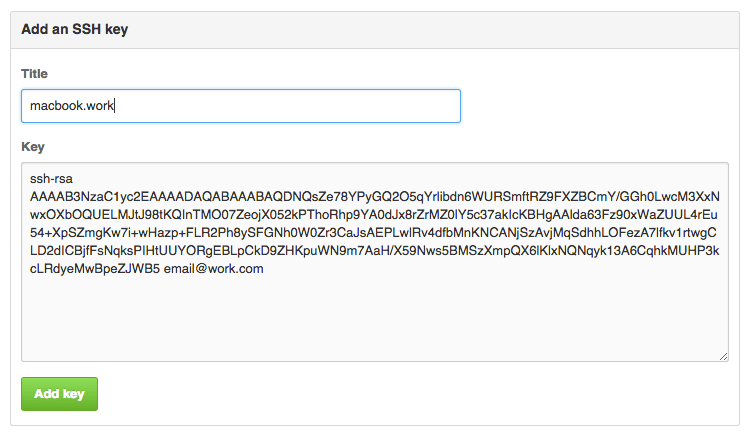Goals
We want to install OpenSSH on a Windows Server 2019, so we can remote access it with ssh myuser@win2019.
Before attempting to connect, check the SSH Server Control Panel, and make sure that the SSH Server is running. If it is not, start it. If the SSH Server is started, we will use OpenSSH to connect to it: Using the GitUser account we have created. To address 127.0.0.1 - the IPv4 'localhost' interface. To the port number we configured in the SSH. Using the SSH protocol, you can connect and authenticate to remote servers and services. With SSH keys, you can connect to GitHub Enterprise Server without supplying your username and personal access token at each visit. Checking for existing SSH keys Before you generate an SSH key, you can check to see if you have any existing SSH keys.
We want also to turn on PowerShell Remoting over SSH, so we can create PSSession objects from PowerShell Core on Linux/MacOs/Windows.
Acknowledgments
This work is a compilation of the pages found on Microsoft's official documentation and community:
Login Shell on Windows Server 2019 core
Let me repeat the title.. Do this ONLY on Windows Core Edition. This will allow you to login with a PowerShell sessio directly.
If you are on the console, you must be in a cmd.exe, so start a powershell and type these instructions:
Install PowerShell Core
Even if you don't configure PowerShell Remoting over SSH, PowerShell Core is a Good Thing (tm) to have on your machines.
First download the install from PowerShell's official github (as of this writing we are on 6.2.3 with 7.0.0 lurking around the corner):
Then, go ahead and install it:
Deploy and Configure OpenSSH
First, install both the SSH Client and Server:
To be able to use SSH keys to authenticate, install the following module:
Then, start the SSH Agent and the SSH Server services:
You can check the Firewall rule like this:
Configure Powershell to be the default shell when remoting in via SSH:
Configure you SSH environment on the Windows server so you can add your SSH public key to authenticate:
Configure PowerShell Remoting over SSH
The final touch is to allow PSSession over SSH. Open the SSHD Config file at C:ProgramDataSSHsshd_config,and modify the line that allow public keys to authenticate:
Norton clean up. Install Norton Clean app cleaner and memory cleaner to remove junk and free up memory space: Clean and clear cache. Identify and remove junk, APK, and residual files. Optimize memory space. To aid in developing a long-term cleanup plan, Norton was divided into three operable units (OUs,) which became two OUs in 1998, when OU2 and OU3 were combined to form what's known as the Basewide OU. OU1 is known as Central Base Area. Wipe down your computer. Dust off the outside of your computer with a soft, dry cloth at least once a week. Remove any fingerprints on the screen. If you want to use a cleaning fluid, visit a computer store to find one that’s specifically designed for your monitor type. Norton Utilities Premium helps you automatically optimize your PC’s processing power, memory and hard drive. It fixes common issues and frees up space to provide faster access to the programs you want, when you want them. Screens are simulated and subject to change. Automated PC care that works when your PC is idle. Norton City-Wide Cleanup The Norton City-Wide Cleanup will be held Monday - Wednesday, April 19-21. More details will be available here as they are known.
Then add a new ssh subsystem after sftp:
Openssh Windows Server 2016 Github
Note: Make sure to use the MS-DOS 8.3 path notation with / to point to the PowerShell executable. Otherwise the SSHD server will fail incoming sessions with some obscure error like:
Openssh Github Windows
Final step! Reboot the server (Restarting the sshd service does not seem sufficient in my experience):
Connect!
ssh
The first test will be to connect via ssh, the first time, you should force password authentication:
Then add you public key (typically ~/.ssh/id_rsa.pub) to the authorized keys of the Windows server:
Subsequent ssh sessions will look like:
Negociation will happen with the public key.. No more passwords!
PowerShell Core sessions
If you are familiar with sessions in PowerShell, this will be easy. The main difference is the SSH parameters:
Article version: Enterprise Server 2.22
Article version: Enterprise Server 2.22
Git Openssh
You can connect to GitHub Enterprise Server using SSH.
About SSH→
Using the SSH protocol, you can connect and authenticate to remote servers and services. With SSH keys, you can connect to GitHub Enterprise Server without supplying your username and personal access token at each visit.
Checking for existing SSH keys→
Before you generate an SSH key, you can check to see if you have any existing SSH keys.
Generating a new SSH key and adding it to the ssh-agent→
Openssh Server Github Free
After you've checked for existing SSH keys, you can generate a new SSH key to use for authentication, then add it to the ssh-agent.
Adding a new SSH key to your GitHub account→

To configure your GitHub Enterprise Server account to use your new (or existing) SSH key, you'll also need to add it to your GitHub Enterprise Server account.
Testing your SSH connection→
After you've set up your SSH key and added it to your GitHub Enterprise Server account, you can test your connection.
Working with SSH key passphrases→
Github Powershell Win32 Openssh
You can secure your SSH keys and configure an authentication agent so that you won't have to reenter your passphrase every time you use your SSH keys.
